-
FACTOR ANALYSIS
-
\r\n\r\n\r\nValue chain Analysis
-
\r\n\r\n\r\nPorter's
-
Five Forces Analysis
-
\r\n\r\n\r\nBargaining Power of Suppliers
-
\r\n\r\n\r\nBargaining
-
Power of Buyers
-
\r\n\r\n\r\nThreat of New Entrants
-
\r\n\r\n\r\nThreat
-
of Substitutes
-
\r\n\r\n\r\nIntensity of Rivalry
-
\r\n\r\n\r\n\r\n\r\nCOVID-19
-
Impact Analysis
-
\r\n\r\n\r\nMarket Impact Analysis
-
\r\n\r\n\r\nRegional
-
Impact
-
\r\n\r\n\r\nOpportunity and Threat Analysis
-
\r\n\r\n\r\n\r\n\r\n\r\n\r\n
-
\r\n
-
\r\n\r\n\r\nTextured
-
Soy Protein Market, BY Application (USD Billion)
-
\r\n\r\n\r\nMeat
-
Alternatives
-
\r\n\r\n\r\nDairy Alternatives
-
\r\n\r\n\r\nSnacks
-
\r\n\r\n\r\nBakery
-
Products
-
\r\n\r\n\r\n\r\n\r\nTextured Soy Protein
-
Market, BY Form (USD Billion)
-
\r\n\r\n\r\nTextured Soy Protein
-
Isolate
-
\r\n\r\n\r\nTextured Soy Protein Concentrate
-
\r\n\r\n\r\nTextured
-
Soy Flour
-
\r\n\r\n\r\n\r\n\r\nTextured Soy Protein
-
Market, BY End Use (USD Billion)
-
\r\n\r\n\r\nFood Industry
-
\r\n\r\n\r\nFeed
-
Industry
-
\r\n\r\n\r\nNutritional Supplements
-
\r\n\r\n\r\n\r\n\r\nTextured
-
Soy Protein Market, BY Distribution Channel (USD Billion)
-
\r\n\r\n\r\nOnline
-
Retail
-
\r\n\r\n\r\nSupermarkets/Hypermarkets
-
\r\n\r\n\r\nHealth
-
Food Stores
-
\r\n\r\n\r\n\r\n\r\nTextured Soy Protein
-
Market, BY Regional (USD Billion)
-
\r\n\r\n\r\nNorth America
-
\r\n\r\n\r\nUS
-
\r\n\r\n\r\nCanada
-
\r\n\r\n\r\n\r\n\r\nEurope
-
\r\n\r\n\r\nGermany
-
\r\n\r\n\r\nUK
-
\r\n\r\n\r\nFrance
-
\r\n\r\n\r\nRussia
-
\r\n\r\n\r\nItaly
-
\r\n\r\n\r\nSpain
-
\r\n\r\n\r\nRest
-
of Europe
-
\r\n\r\n\r\n\r\n\r\nAPAC
-
\r\n\r\n\r\nChina
-
\r\n\r\n\r\nIndia
-
\r\n\r\n\r\nJapan
-
\r\n\r\n\r\nSouth
-
Korea
-
\r\n\r\n\r\nMalaysia
-
\r\n\r\n\r\nThailand
-
\r\n\r\n\r\nIndonesia
-
\r\n\r\n\r\nRest
-
of APAC
-
\r\n\r\n\r\n\r\n\r\nSouth America
-
\r\n\r\n\r\nBrazil
-
\r\n\r\n\r\nMexico
-
\r\n\r\n\r\nArgentina
-
\r\n\r\n\r\nRest
-
of South America
-
\r\n\r\n\r\n\r\n\r\nMEA
-
\r\n\r\n\r\nGCC
-
Countries
-
\r\n\r\n\r\nSouth Africa
-
\r\n\r\n\r\nRest
-
of MEA
-
\r\n\r\n\r\n\r\n\r\n\r\n\r\n
-
\r\n
-
\r\n\r\n\r\nCompetitive
-
Landscape
-
\r\n\r\n\r\nOverview
-
\r\n\r\n\r\nCompetitive
-
Analysis
-
\r\n\r\n\r\nMarket share Analysis
-
\r\n\r\n\r\nMajor
-
Growth Strategy in the Textured Soy Protein Market
-
\r\n\r\n\r\nCompetitive
-
Benchmarking
-
\r\n\r\n\r\nLeading Players in Terms of Number of Developments
-
in the Textured Soy Protein Market
-
\r\n\r\n\r\nKey developments and
-
growth strategies
-
\r\n\r\n\r\nNew Product Launch/Service Deployment
-
\r\n\r\n\r\nMerger
-
& Acquisitions
-
\r\n\r\n\r\nJoint Ventures
-
\r\n\r\n\r\n\r\n\r\nMajor
-
Players Financial Matrix
-
\r\n\r\n\r\nSales and Operating Income
-
\r\n\r\n\r\nMajor
-
Players R&D Expenditure. 2023
-
\r\n\r\n\r\n\r\n\r\n\r\n\r\nCompany
-
Profiles
-
\r\n\r\n\r\nDuPont
-
\r\n\r\n\r\nFinancial
-
Overview
-
\r\n\r\n\r\nProducts Offered
-
\r\n\r\n\r\nKey
-
Developments
-
\r\n\r\n\r\nSWOT Analysis
-
\r\n\r\n\r\nKey
-
Strategies
-
\r\n\r\n\r\n\r\n\r\nEden Foods
-
\r\n\r\n\r\nFinancial
-
Overview
-
\r\n\r\n\r\nProducts Offered
-
\r\n\r\n\r\nKey
-
Developments
-
\r\n\r\n\r\nSWOT Analysis
-
\r\n\r\n\r\nKey
-
Strategies
-
\r\n\r\n\r\n\r\n\r\nGlico Nutrition
-
\r\n\r\n\r\nFinancial
-
Overview
-
\r\n\r\n\r\nProducts Offered
-
\r\n\r\n\r\nKey
-
Developments
-
\r\n\r\n\r\nSWOT Analysis
-
\r\n\r\n\r\nKey
-
Strategies
-
\r\n\r\n\r\n\r\n\r\nShanghai Jingshen
-
\r\n\r\n\r\nFinancial
-
Overview
-
\r\n\r\n\r\nProducts Offered
-
\r\n\r\n\r\nKey
-
Developments
-
\r\n\r\n\r\nSWOT Analysis
-
\r\n\r\n\r\nKey
-
Strategies
-
\r\n\r\n\r\n\r\n\r\nThe Soybean Company
-
\r\n\r\n\r\nFinancial
-
Overview
-
\r\n\r\n\r\nProducts Offered
-
\r\n\r\n\r\nKey
-
Developments
-
\r\n\r\n\r\nSWOT Analysis
-
\r\n\r\n\r\nKey
-
Strategies
-
\r\n\r\n\r\n\r\n\r\nGreenleaf Foods
-
\r\n\r\n\r\nFinancial
-
Overview
-
\r\n\r\n\r\nProducts Offered
-
\r\n\r\n\r\nKey
-
Developments
-
\r\n\r\n\r\nSWOT Analysis
-
\r\n\r\n\r\nKey
-
Strategies
-
\r\n\r\n\r\n\r\n\r\nAGT Food and Ingredients
-
\r\n\r\n\r\nFinancial
-
Overview
-
\r\n\r\n\r\nProducts Offered
-
\r\n\r\n\r\nKey
-
Developments
-
\r\n\r\n\r\nSWOT Analysis
-
\r\n\r\n\r\nKey
-
Strategies
-
\r\n\r\n\r\n\r\n\r\nCargill
-
\r\n\r\n\r\nFinancial
-
Overview
-
\r\n\r\n\r\nProducts Offered
-
\r\n\r\n\r\nKey
-
Developments
-
\r\n\r\n\r\nSWOT Analysis
-
\r\n\r\n\r\nKey
-
Strategies
-
\r\n\r\n\r\n\r\n\r\nPinnacle Foods
-
\r\n\r\n\r\nFinancial
-
Overview
-
\r\n\r\n\r\nProducts Offered
-
\r\n\r\n\r\nKey
-
Developments
-
\r\n\r\n\r\nSWOT Analysis
-
\r\n\r\n\r\nKey
-
Strategies
-
\r\n\r\n\r\n\r\n\r\nIngredion
-
\r\n\r\n\r\nFinancial
-
Overview
-
\r\n\r\n\r\nProducts Offered
-
\r\n\r\n\r\nKey
-
Developments
-
\r\n\r\n\r\nSWOT Analysis
-
\r\n\r\n\r\nKey
-
Strategies
-
\r\n\r\n\r\n\r\n\r\nMGP Ingredients
-
\r\n\r\n\r\nFinancial
-
Overview
-
\r\n\r\n\r\nProducts Offered
-
\r\n\r\n\r\nKey
-
Developments
-
\r\n\r\n\r\nSWOT Analysis
-
\r\n\r\n\r\nKey
-
Strategies
-
\r\n\r\n\r\n\r\n\r\nRuchi Soya
-
\r\n\r\n\r\nFinancial
-
Overview
-
\r\n\r\n\r\nProducts Offered
-
\r\n\r\n\r\nKey
-
Developments
-
\r\n\r\n\r\nSWOT Analysis
-
\r\n\r\n\r\nKey
-
Strategies
-
\r\n\r\n\r\n\r\n\r\nSolae
-
\r\n\r\n\r\nFinancial
-
Overview
-
\r\n\r\n\r\nProducts Offered
-
\r\n\r\n\r\nKey
-
Developments
-
\r\n\r\n\r\nSWOT Analysis
-
\r\n\r\n\r\nKey
-
Strategies
-
\r\n\r\n\r\n\r\n\r\nWILD Flavors
-
\r\n\r\n\r\nFinancial
-
Overview
-
\r\n\r\n\r\nProducts Offered
-
\r\n\r\n\r\nKey
-
Developments
-
\r\n\r\n\r\nSWOT Analysis
-
\r\n\r\n\r\nKey
-
Strategies
-
\r\n\r\n\r\n\r\n\r\nVital Proteins
-
\r\n\r\n\r\nFinancial
-
Overview
-
\r\n\r\n\r\nProducts Offered
-
\r\n\r\n\r\nKey
-
Developments
-
\r\n\r\n\r\nSWOT Analysis
-
\r\n\r\n\r\nKey
-
Strategies
-
\r\n\r\n\r\n\r\n\r\n\r\n\r\nAppendix
-
\r\n\r\n\r\nReferences
-
\r\n\r\n\r\nRelated
-
Reports
-
\r\n\r\n\r\n\r\n\r\nLIST Of tables
-
\r\n
-
\r\n\r\n\r\nLIST
-
OF ASSUMPTIONS
-
\r\n\r\n\r\nNorth America Textured Soy Protein Market
-
SIZE ESTIMATES & FORECAST, BY APPLICATION, 2019-2035 (USD Billions)
-
\r\n\r\n\r\nNorth
-
America Textured Soy Protein Market SIZE ESTIMATES & FORECAST, BY FORM, 2019-2035
-
(USD Billions)
-
\r\n\r\n\r\nNorth America Textured Soy Protein Market
-
SIZE ESTIMATES & FORECAST, BY END USE, 2019-2035 (USD Billions)
-
\r\n\r\n\r\nNorth
-
America Textured Soy Protein Market SIZE ESTIMATES & FORECAST, BY DISTRIBUTION
-
CHANNEL, 2019-2035 (USD Billions)
-
\r\n\r\n\r\nNorth America Textured
-
Soy Protein Market SIZE ESTIMATES & FORECAST, BY REGIONAL, 2019-2035 (USD Billions)
-
\r\n\r\n\r\nUS
-
Textured Soy Protein Market SIZE ESTIMATES & FORECAST, BY APPLICATION, 2019-2035
-
(USD Billions)
-
\r\n\r\n\r\nUS Textured Soy Protein Market SIZE ESTIMATES
-
& FORECAST, BY FORM, 2019-2035 (USD Billions)
-
\r\n\r\n\r\nUS
-
Textured Soy Protein Market SIZE ESTIMATES & FORECAST, BY END USE, 2019-2035
-
(USD Billions)
-
\r\n\r\n\r\nUS Textured Soy Protein Market SIZE ESTIMATES
-
& FORECAST, BY DISTRIBUTION CHANNEL, 2019-2035 (USD Billions)
-
\r\n\r\n\r\nUS
-
Textured Soy Protein Market SIZE ESTIMATES & FORECAST, BY REGIONAL, 2019-2035
-
(USD Billions)
-
\r\n\r\n\r\nCanada Textured Soy Protein Market SIZE
-
ESTIMATES & FORECAST, BY APPLICATION, 2019-2035 (USD Billions)
-
\r\n\r\n\r\nCanada
-
Textured Soy Protein Market SIZE ESTIMATES & FORECAST, BY FORM, 2019-2035 (USD
-
Billions)
-
\r\n\r\n\r\nCanada Textured Soy Protein Market SIZE ESTIMATES
-
& FORECAST, BY END USE, 2019-2035 (USD Billions)
-
\r\n\r\n\r\nCanada
-
Textured Soy Protein Market SIZE ESTIMATES & FORECAST, BY DISTRIBUTION CHANNEL,
-
\r\n\r\n\r\nCanada Textured Soy Protein
-
Market SIZE ESTIMATES & FORECAST, BY REGIONAL, 2019-2035 (USD Billions)
-
\r\n\r\n\r\nEurope
-
Textured Soy Protein Market SIZE ESTIMATES & FORECAST, BY APPLICATION, 2019-2035
-
(USD Billions)
-
\r\n\r\n\r\nEurope Textured Soy Protein Market SIZE
-
ESTIMATES & FORECAST, BY FORM, 2019-2035 (USD Billions)
-
\r\n\r\n\r\nEurope
-
Textured Soy Protein Market SIZE ESTIMATES & FORECAST, BY END USE, 2019-2035
-
(USD Billions)
-
\r\n\r\n\r\nEurope Textured Soy Protein Market SIZE
-
ESTIMATES & FORECAST, BY DISTRIBUTION CHANNEL, 2019-2035 (USD Billions)
-
\r\n\r\n\r\nEurope
-
Textured Soy Protein Market SIZE ESTIMATES & FORECAST, BY REGIONAL, 2019-2035
-
(USD Billions)
-
\r\n\r\n\r\nGermany Textured Soy Protein Market SIZE
-
ESTIMATES & FORECAST, BY APPLICATION, 2019-2035 (USD Billions)
-
\r\n\r\n\r\nGermany
-
Textured Soy Protein Market SIZE ESTIMATES & FORECAST, BY FORM, 2019-2035 (USD
-
Billions)
-
\r\n\r\n\r\nGermany Textured Soy Protein Market SIZE ESTIMATES
-
& FORECAST, BY END USE, 2019-2035 (USD Billions)
-
\r\n\r\n\r\nGermany
-
Textured Soy Protein Market SIZE ESTIMATES & FORECAST, BY DISTRIBUTION CHANNEL,
-
\r\n\r\n\r\nGermany Textured Soy Protein
-
Market SIZE ESTIMATES & FORECAST, BY REGIONAL, 2019-2035 (USD Billions)
-
\r\n\r\n\r\nUK
-
Textured Soy Protein Market SIZE ESTIMATES & FORECAST, BY APPLICATION, 2019-2035
-
(USD Billions)
-
\r\n\r\n\r\nUK Textured Soy Protein Market SIZE ESTIMATES
-
& FORECAST, BY FORM, 2019-2035 (USD Billions)
-
\r\n\r\n\r\nUK
-
Textured Soy Protein Market SIZE ESTIMATES & FORECAST, BY END USE, 2019-2035
-
(USD Billions)
-
\r\n\r\n\r\nUK Textured Soy Protein Market SIZE ESTIMATES
-
& FORECAST, BY DISTRIBUTION CHANNEL, 2019-2035 (USD Billions)
-
\r\n\r\n\r\nUK
-
Textured Soy Protein Market SIZE ESTIMATES & FORECAST, BY REGIONAL, 2019-2035
-
(USD Billions)
-
\r\n\r\n\r\nFrance Textured Soy Protein Market SIZE
-
ESTIMATES & FORECAST, BY APPLICATION, 2019-2035 (USD Billions)
-
\r\n\r\n\r\nFrance
-
Textured Soy Protein Market SIZE ESTIMATES & FORECAST, BY FORM, 2019-2035 (USD
-
Billions)
-
\r\n\r\n\r\nFrance Textured Soy Protein Market SIZE ESTIMATES
-
& FORECAST, BY END USE, 2019-2035 (USD Billions)
-
\r\n\r\n\r\nFrance
-
Textured Soy Protein Market SIZE ESTIMATES & FORECAST, BY DISTRIBUTION CHANNEL,
-
\r\n\r\n\r\nFrance Textured Soy Protein
-
Market SIZE ESTIMATES & FORECAST, BY REGIONAL, 2019-2035 (USD Billions)
-
\r\n\r\n\r\nRussia
-
Textured Soy Protein Market SIZE ESTIMATES & FORECAST, BY APPLICATION, 2019-2035
-
(USD Billions)
-
\r\n\r\n\r\nRussia Textured Soy Protein Market SIZE
-
ESTIMATES & FORECAST, BY FORM, 2019-2035 (USD Billions)
-
\r\n\r\n\r\nRussia
-
Textured Soy Protein Market SIZE ESTIMATES & FORECAST, BY END USE, 2019-2035
-
(USD Billions)
-
\r\n\r\n\r\nRussia Textured Soy Protein Market SIZE
-
ESTIMATES & FORECAST, BY DISTRIBUTION CHANNEL, 2019-2035 (USD Billions)
-
\r\n\r\n\r\nRussia
-
Textured Soy Protein Market SIZE ESTIMATES & FORECAST, BY REGIONAL, 2019-2035
-
(USD Billions)
-
\r\n\r\n\r\nItaly Textured Soy Protein Market SIZE
-
ESTIMATES & FORECAST, BY APPLICATION, 2019-2035 (USD Billions)
-
\r\n\r\n\r\nItaly
-
Textured Soy Protein Market SIZE ESTIMATES & FORECAST, BY FORM, 2019-2035 (USD
-
Billions)
-
\r\n\r\n\r\nItaly Textured Soy Protein Market SIZE ESTIMATES
-
& FORECAST, BY END USE, 2019-2035 (USD Billions)
-
\r\n\r\n\r\nItaly
-
Textured Soy Protein Market SIZE ESTIMATES & FORECAST, BY DISTRIBUTION CHANNEL,
-
\r\n\r\n\r\nItaly Textured Soy Protein Market
-
SIZE ESTIMATES & FORECAST, BY REGIONAL, 2019-2035 (USD Billions)
-
\r\n\r\n\r\nSpain
-
Textured Soy Protein Market SIZE ESTIMATES & FORECAST, BY APPLICATION, 2019-2035
-
(USD Billions)
-
\r\n\r\n\r\nSpain Textured Soy Protein Market SIZE
-
ESTIMATES & FORECAST, BY FORM, 2019-2035 (USD Billions)
-
\r\n\r\n\r\nSpain
-
Textured Soy Protein Market SIZE ESTIMATES & FORECAST, BY END USE, 2019-2035
-
(USD Billions)
-
\r\n\r\n\r\nSpain Textured Soy Protein Market SIZE
-
ESTIMATES & FORECAST, BY DISTRIBUTION CHANNEL, 2019-2035 (USD Billions)
-
\r\n\r\n\r\nSpain
-
Textured Soy Protein Market SIZE ESTIMATES & FORECAST, BY REGIONAL, 2019-2035
-
(USD Billions)
-
\r\n\r\n\r\nRest of Europe Textured Soy Protein Market
-
SIZE ESTIMATES & FORECAST, BY APPLICATION, 2019-2035 (USD Billions)
-
\r\n\r\n\r\nRest
-
of Europe Textured Soy Protein Market SIZE ESTIMATES & FORECAST, BY FORM, 2019-2035
-
(USD Billions)
-
\r\n\r\n\r\nRest of Europe Textured Soy Protein Market
-
SIZE ESTIMATES & FORECAST, BY END USE, 2019-2035 (USD Billions)
-
\r\n\r\n\r\nRest
-
of Europe Textured Soy Protein Market SIZE ESTIMATES & FORECAST, BY DISTRIBUTION
-
CHANNEL, 2019-2035 (USD Billions)
-
\r\n\r\n\r\nRest of Europe Textured
-
Soy Protein Market SIZE ESTIMATES & FORECAST, BY REGIONAL, 2019-2035 (USD Billions)
-
\r\n\r\n\r\nAPAC
-
Textured Soy Protein Market SIZE ESTIMATES & FORECAST, BY APPLICATION, 2019-2035
-
(USD Billions)
-
\r\n\r\n\r\nAPAC Textured Soy Protein Market SIZE
-
ESTIMATES & FORECAST, BY FORM, 2019-2035 (USD Billions)
-
\r\n\r\n\r\nAPAC
-
Textured Soy Protein Market SIZE ESTIMATES & FORECAST, BY END USE, 2019-2035
-
(USD Billions)
-
\r\n\r\n\r\nAPAC Textured Soy Protein Market SIZE
-
ESTIMATES & FORECAST, BY DISTRIBUTION CHANNEL, 2019-2035 (USD Billions)
-
\r\n\r\n\r\nAPAC
-
Textured Soy Protein Market SIZE ESTIMATES & FORECAST, BY REGIONAL, 2019-2035
-
(USD Billions)
-
\r\n\r\n\r\nChina Textured Soy Protein Market SIZE
-
ESTIMATES & FORECAST, BY APPLICATION, 2019-2035 (USD Billions)
-
\r\n\r\n\r\nChina
-
Textured Soy Protein Market SIZE ESTIMATES & FORECAST, BY FORM, 2019-2035 (USD
-
Billions)
-
\r\n\r\n\r\nChina Textured Soy Protein Market SIZE ESTIMATES
-
& FORECAST, BY END USE, 2019-2035 (USD Billions)
-
\r\n\r\n\r\nChina
-
Textured Soy Protein Market SIZE ESTIMATES & FORECAST, BY DISTRIBUTION CHANNEL,
-
\r\n\r\n\r\nChina Textured Soy Protein Market
-
SIZE ESTIMATES & FORECAST, BY REGIONAL, 2019-2035 (USD Billions)
-
\r\n\r\n\r\nIndia
-
Textured Soy Protein Market SIZE ESTIMATES & FORECAST, BY APPLICATION, 2019-2035
-
(USD Billions)
-
\r\n\r\n\r\nIndia Textured Soy Protein Market SIZE
-
ESTIMATES & FORECAST, BY FORM, 2019-2035 (USD Billions)
-
\r\n\r\n\r\nIndia
-
Textured Soy Protein Market SIZE ESTIMATES & FORECAST, BY END USE, 2019-2035
-
(USD Billions)
-
\r\n\r\n\r\nIndia Textured Soy Protein Market SIZE
-
ESTIMATES & FORECAST, BY DISTRIBUTION CHANNEL, 2019-2035 (USD Billions)
-
\r\n\r\n\r\nIndia
-
Textured Soy Protein Market SIZE ESTIMATES & FORECAST, BY REGIONAL, 2019-2035
-
(USD Billions)
-
\r\n\r\n\r\nJapan Textured Soy Protein Market SIZE
-
ESTIMATES & FORECAST, BY APPLICATION, 2019-2035 (USD Billions)
-
\r\n\r\n\r\nJapan
-
Textured Soy Protein Market SIZE ESTIMATES & FORECAST, BY FORM, 2019-2035 (USD
-
Billions)
-
\r\n\r\n\r\nJapan Textured Soy Protein Market SIZE ESTIMATES
-
& FORECAST, BY END USE, 2019-2035 (USD Billions)
-
\r\n\r\n\r\nJapan
-
Textured Soy Protein Market SIZE ESTIMATES & FORECAST, BY DISTRIBUTION CHANNEL,
-
\r\n\r\n\r\nJapan Textured Soy Protein Market
-
SIZE ESTIMATES & FORECAST, BY REGIONAL, 2019-2035 (USD Billions)
-
\r\n\r\n\r\nSouth
-
Korea Textured Soy Protein Market SIZE ESTIMATES & FORECAST, BY APPLICATION,
-
\r\n\r\n\r\nSouth Korea Textured Soy Protein
-
Market SIZE ESTIMATES & FORECAST, BY FORM, 2019-2035 (USD Billions)
-
\r\n\r\n\r\nSouth
-
Korea Textured Soy Protein Market SIZE ESTIMATES & FORECAST, BY END USE, 2019-2035
-
(USD Billions)
-
\r\n\r\n\r\nSouth Korea Textured Soy Protein Market
-
SIZE ESTIMATES & FORECAST, BY DISTRIBUTION CHANNEL, 2019-2035 (USD Billions)
-
\r\n\r\n\r\nSouth
-
Korea Textured Soy Protein Market SIZE ESTIMATES & FORECAST, BY REGIONAL, 2019-2035
-
(USD Billions)
-
\r\n\r\n\r\nMalaysia Textured Soy Protein Market SIZE
-
ESTIMATES & FORECAST, BY APPLICATION, 2019-2035 (USD Billions)
-
\r\n\r\n\r\nMalaysia
-
Textured Soy Protein Market SIZE ESTIMATES & FORECAST, BY FORM, 2019-2035 (USD
-
Billions)
-
\r\n\r\n\r\nMalaysia Textured Soy Protein Market SIZE ESTIMATES
-
& FORECAST, BY END USE, 2019-2035 (USD Billions)
-
\r\n\r\n\r\nMalaysia
-
Textured Soy Protein Market SIZE ESTIMATES & FORECAST, BY DISTRIBUTION CHANNEL,
-
\r\n\r\n\r\nMalaysia Textured Soy Protein
-
Market SIZE ESTIMATES & FORECAST, BY REGIONAL, 2019-2035 (USD Billions)
-
\r\n\r\n\r\nThailand
-
Textured Soy Protein Market SIZE ESTIMATES & FORECAST, BY APPLICATION, 2019-2035
-
(USD Billions)
-
\r\n\r\n\r\nThailand Textured Soy Protein Market SIZE
-
ESTIMATES & FORECAST, BY FORM, 2019-2035 (USD Billions)
-
\r\n\r\n\r\nThailand
-
Textured Soy Protein Market SIZE ESTIMATES & FORECAST, BY END USE, 2019-2035
-
(USD Billions)
-
\r\n\r\n\r\nThailand Textured Soy Protein Market SIZE
-
ESTIMATES & FORECAST, BY DISTRIBUTION CHANNEL, 2019-2035 (USD Billions)
-
\r\n\r\n\r\nThailand
-
Textured Soy Protein Market SIZE ESTIMATES & FORECAST, BY REGIONAL, 2019-2035
-
(USD Billions)
-
\r\n\r\n\r\nIndonesia Textured Soy Protein Market
-
SIZE ESTIMATES & FORECAST, BY APPLICATION, 2019-2035 (USD Billions)
-
\r\n\r\n\r\nIndonesia
-
Textured Soy Protein Market SIZE ESTIMATES & FORECAST, BY FORM, 2019-2035 (USD
-
Billions)
-
\r\n\r\n\r\nIndonesia Textured Soy Protein Market SIZE
-
ESTIMATES & FORECAST, BY END USE, 2019-2035 (USD Billions)
-
\r\n\r\n\r\nIndonesia
-
Textured Soy Protein Market SIZE ESTIMATES & FORECAST, BY DISTRIBUTION CHANNEL,
-
\r\n\r\n\r\nIndonesia Textured Soy Protein
-
Market SIZE ESTIMATES & FORECAST, BY REGIONAL, 2019-2035 (USD Billions)
-
\r\n\r\n\r\nRest
-
of APAC Textured Soy Protein Market SIZE ESTIMATES & FORECAST, BY APPLICATION,
-
\r\n\r\n\r\nRest of APAC Textured Soy Protein
-
Market SIZE ESTIMATES & FORECAST, BY FORM, 2019-2035 (USD Billions)
-
\r\n\r\n\r\nRest
-
of APAC Textured Soy Protein Market SIZE ESTIMATES & FORECAST, BY END USE, 2019-2035
-
(USD Billions)
-
\r\n\r\n\r\nRest of APAC Textured Soy Protein Market
-
SIZE ESTIMATES & FORECAST, BY DISTRIBUTION CHANNEL, 2019-2035 (USD Billions)
-
\r\n\r\n\r\nRest
-
of APAC Textured Soy Protein Market SIZE ESTIMATES & FORECAST, BY REGIONAL,
-
\r\n\r\n\r\nSouth America Textured Soy Protein
-
Market SIZE ESTIMATES & FORECAST, BY APPLICATION, 2019-2035 (USD Billions)
-
\r\n\r\n\r\nSouth
-
America Textured Soy Protein Market SIZE ESTIMATES & FORECAST, BY FORM, 2019-2035
-
(USD Billions)
-
\r\n\r\n\r\nSouth America Textured Soy Protein Market
-
SIZE ESTIMATES & FORECAST, BY END USE, 2019-2035 (USD Billions)
-
\r\n\r\n\r\nSouth
-
America Textured Soy Protein Market SIZE ESTIMATES & FORECAST, BY DISTRIBUTION
-
CHANNEL, 2019-2035 (USD Billions)
-
\r\n\r\n\r\nSouth America Textured
-
Soy Protein Market SIZE ESTIMATES & FORECAST, BY REGIONAL, 2019-2035 (USD Billions)
-
\r\n\r\n\r\nBrazil
-
Textured Soy Protein Market SIZE ESTIMATES & FORECAST, BY APPLICATION, 2019-2035
-
(USD Billions)
-
\r\n\r\n\r\nBrazil Textured Soy Protein Market SIZE
-
ESTIMATES & FORECAST, BY FORM, 2019-2035 (USD Billions)
-
\r\n\r\n\r\nBrazil
-
Textured Soy Protein Market SIZE ESTIMATES & FORECAST, BY END USE, 2019-2035
-
(USD Billions)
-
\r\n\r\n\r\nBrazil Textured Soy Protein Market SIZE
-
ESTIMATES & FORECAST, BY DISTRIBUTION CHANNEL, 2019-2035 (USD Billions)
-
\r\n\r\n\r\nBrazil
-
Textured Soy Protein Market SIZE ESTIMATES & FORECAST, BY REGIONAL, 2019-2035
-
(USD Billions)
-
\r\n\r\n\r\nMexico Textured Soy Protein Market SIZE
-
ESTIMATES & FORECAST, BY APPLICATION, 2019-2035 (USD Billions)
-
\r\n\r\n\r\nMexico
-
Textured Soy Protein Market SIZE ESTIMATES & FORECAST, BY FORM, 2019-2035 (USD
-
Billions)
-
\r\n\r\n\r\nMexico Textured Soy Protein Market SIZE ESTIMATES
-
& FORECAST, BY END USE, 2019-2035 (USD Billions)
-
\r\n\r\n\r\nMexico
-
Textured Soy Protein Market SIZE ESTIMATES & FORECAST, BY DISTRIBUTION CHANNEL,
-
\r\n\r\n\r\nMexico Textured Soy Protein
-
Market SIZE ESTIMATES & FORECAST, BY REGIONAL, 2019-2035 (USD Billions)
-
\r\n\r\n\r\nArgentina
-
Textured Soy Protein Market SIZE ESTIMATES & FORECAST, BY APPLICATION, 2019-2035
-
(USD Billions)
-
\r\n\r\n\r\nArgentina Textured Soy Protein Market
-
SIZE ESTIMATES & FORECAST, BY FORM, 2019-2035 (USD Billions)
-
\r\n\r\n\r\nArgentina
-
Textured Soy Protein Market SIZE ESTIMATES & FORECAST, BY END USE, 2019-2035
-
(USD Billions)
-
\r\n\r\n\r\nArgentina Textured Soy Protein Market
-
SIZE ESTIMATES & FORECAST, BY DISTRIBUTION CHANNEL, 2019-2035 (USD Billions)
-
\r\n\r\n\r\nArgentina
-
Textured Soy Protein Market SIZE ESTIMATES & FORECAST, BY REGIONAL, 2019-2035
-
(USD Billions)
-
\r\n\r\n\r\nRest of South America Textured Soy Protein
-
Market SIZE ESTIMATES & FORECAST, BY APPLICATION, 2019-2035 (USD Billions)
-
\r\n\r\n\r\nRest
-
of South America Textured Soy Protein Market SIZE ESTIMATES & FORECAST, BY FORM,
-
\r\n\r\n\r\nRest of South America Textured
-
Soy Protein Market SIZE ESTIMATES & FORECAST, BY END USE, 2019-2035 (USD Billions)
-
\r\n\r\n\r\nRest
-
of South America Textured Soy Protein Market SIZE ESTIMATES & FORECAST, BY DISTRIBUTION
-
CHANNEL, 2019-2035 (USD Billions)
-
\r\n\r\n\r\nRest of South America
-
Textured Soy Protein Market SIZE ESTIMATES & FORECAST, BY REGIONAL, 2019-2035
-
(USD Billions)
-
\r\n\r\n\r\nMEA Textured Soy Protein Market SIZE ESTIMATES
-
& FORECAST, BY APPLICATION, 2019-2035 (USD Billions)
-
\r\n\r\n\r\nMEA
-
Textured Soy Protein Market SIZE ESTIMATES & FORECAST, BY FORM, 2019-2035 (USD
-
Billions)
-
\r\n\r\n\r\nMEA Textured Soy Protein Market SIZE ESTIMATES
-
& FORECAST, BY END USE, 2019-2035 (USD Billions)
-
\r\n\r\n\r\nMEA
-
Textured Soy Protein Market SIZE ESTIMATES & FORECAST, BY DISTRIBUTION CHANNEL,
-
\r\n\r\n\r\nMEA Textured Soy Protein Market
-
SIZE ESTIMATES & FORECAST, BY REGIONAL, 2019-2035 (USD Billions)
-
\r\n\r\n\r\nGCC
-
Countries Textured Soy Protein Market SIZE ESTIMATES & FORECAST, BY APPLICATION,
-
\r\n\r\n\r\nGCC Countries Textured Soy Protein
-
Market SIZE ESTIMATES & FORECAST, BY FORM, 2019-2035 (USD Billions)
-
\r\n\r\n\r\nGCC
-
Countries Textured Soy Protein Market SIZE ESTIMATES & FORECAST, BY END USE,
-
\r\n\r\n\r\nGCC Countries Textured Soy Protein
-
Market SIZE ESTIMATES & FORECAST, BY DISTRIBUTION CHANNEL, 2019-2035 (USD Billions)
-
\r\n\r\n\r\nGCC
-
Countries Textured Soy Protein Market SIZE ESTIMATES & FORECAST, BY REGIONAL,
-
\r\n\r\n\r\nSouth Africa Textured Soy Protein
-
Market SIZE ESTIMATES & FORECAST, BY APPLICATION, 2019-2035 (USD Billions)
-
\r\n\r\n\r\nSouth
-
Africa Textured Soy Protein Market SIZE ESTIMATES & FORECAST, BY FORM, 2019-2035
-
(USD Billions)
-
\r\n\r\n\r\nSouth Africa Textured Soy Protein Market
-
SIZE ESTIMATES & FORECAST, BY END USE, 2019-2035 (USD Billions)
-
\r\n\r\n\r\nSouth
-
Africa Textured Soy Protein Market SIZE ESTIMATES & FORECAST, BY DISTRIBUTION
-
CHANNEL, 2019-2035 (USD Billions)
-
\r\n\r\n\r\nSouth Africa Textured
-
Soy Protein Market SIZE ESTIMATES & FORECAST, BY REGIONAL, 2019-2035 (USD Billions)
-
\r\n\r\n\r\nRest
-
of MEA Textured Soy Protein Market SIZE ESTIMATES & FORECAST, BY APPLICATION,
-
\r\n\r\n\r\nRest of MEA Textured Soy Protein
-
Market SIZE ESTIMATES & FORECAST, BY FORM, 2019-2035 (USD Billions)
-
\r\n\r\n\r\nRest
-
of MEA Textured Soy Protein Market SIZE ESTIMATES & FORECAST, BY END USE, 2019-2035
-
(USD Billions)
-
\r\n\r\n\r\nRest of MEA Textured Soy Protein Market
-
SIZE ESTIMATES & FORECAST, BY DISTRIBUTION CHANNEL, 2019-2035 (USD Billions)
-
\r\n\r\n\r\nRest
-
of MEA Textured Soy Protein Market SIZE ESTIMATES & FORECAST, BY REGIONAL, 2019-2035
-
(USD Billions)
-
\r\n\r\n\r\nPRODUCT LAUNCH/PRODUCT DEVELOPMENT/APPROVAL
-
\r\n\r\n\r\nACQUISITION/PARTNERSHIP
-
\r\n\r\n\r\n
-
\r\n
-
\r\n
-
\r\n
-
\r\n
-
\r\n
-
\r\n
-
\r\n
-
\r\n
-
\r\n
-
\r\n
-
\r\n
-
\r\n
-
\r\n
-
\r\n
-
\r\n
-
\r\n
-
\r\n
-
\r\n
-
\r\n
-
\r\n
-
\r\n
-
\r\n
-
\r\n
-
\r\n
-
\r\n
-
\r\n
-
\r\n
-
\r\n
-
\r\nLIST
-
Of figures
-
\r\n
-
\r\n\r\n\r\nMARKET SYNOPSIS
-
\r\n\r\n\r\nNORTH
-
AMERICA TEXTURED SOY PROTEIN MARKET ANALYSIS
-
\r\n\r\n\r\nUS TEXTURED
-
SOY PROTEIN MARKET ANALYSIS BY APPLICATION
-
\r\n\r\n\r\nUS TEXTURED
-
SOY PROTEIN MARKET ANALYSIS BY FORM
-
\r\n\r\n\r\nUS TEXTURED SOY PROTEIN
-
MARKET ANALYSIS BY END USE
-
\r\n\r\n\r\nUS TEXTURED SOY PROTEIN MARKET
-
ANALYSIS BY DISTRIBUTION CHANNEL
-
\r\n\r\n\r\nUS TEXTURED SOY PROTEIN
-
MARKET ANALYSIS BY REGIONAL
-
\r\n\r\n\r\nCANADA TEXTURED SOY PROTEIN
-
MARKET ANALYSIS BY APPLICATION
-
\r\n\r\n\r\nCANADA TEXTURED SOY PROTEIN
-
MARKET ANALYSIS BY FORM
-
\r\n\r\n\r\nCANADA TEXTURED SOY PROTEIN MARKET
-
ANALYSIS BY END USE
-
\r\n\r\n\r\nCANADA TEXTURED SOY PROTEIN MARKET
-
ANALYSIS BY DISTRIBUTION CHANNEL
-
\r\n\r\n\r\nCANADA TEXTURED SOY
-
PROTEIN MARKET ANALYSIS BY REGIONAL
-
\r\n\r\n\r\nEUROPE TEXTURED SOY
-
PROTEIN MARKET ANALYSIS
-
\r\n\r\n\r\nGERMANY TEXTURED SOY PROTEIN
-
MARKET ANALYSIS BY APPLICATION
-
\r\n\r\n\r\nGERMANY TEXTURED SOY PROTEIN
-
MARKET ANALYSIS BY FORM
-
\r\n\r\n\r\nGERMANY TEXTURED SOY PROTEIN
-
MARKET ANALYSIS BY END USE
-
\r\n\r\n\r\nGERMANY TEXTURED SOY PROTEIN
-
MARKET ANALYSIS BY DISTRIBUTION CHANNEL
-
\r\n\r\n\r\nGERMANY TEXTURED
-
SOY PROTEIN MARKET ANALYSIS BY REGIONAL
-
\r\n\r\n\r\nUK TEXTURED SOY
-
PROTEIN MARKET ANALYSIS BY APPLICATION
-
\r\n\r\n\r\nUK TEXTURED SOY
-
PROTEIN MARKET ANALYSIS BY FORM
-
\r\n\r\n\r\nUK TEXTURED SOY PROTEIN
-
MARKET ANALYSIS BY END USE
-
\r\n\r\n\r\nUK TEXTURED SOY PROTEIN MARKET
-
ANALYSIS BY DISTRIBUTION CHANNEL
-
\r\n\r\n\r\nUK TEXTURED SOY PROTEIN
-
MARKET ANALYSIS BY REGIONAL
-
\r\n\r\n\r\nFRANCE TEXTURED SOY PROTEIN
-
MARKET ANALYSIS BY APPLICATION
-
\r\n\r\n\r\nFRANCE TEXTURED SOY PROTEIN
-
MARKET ANALYSIS BY FORM
-
\r\n\r\n\r\nFRANCE TEXTURED SOY PROTEIN MARKET
-
ANALYSIS BY END USE
-
\r\n\r\n\r\nFRANCE TEXTURED SOY PROTEIN MARKET
-
ANALYSIS BY DISTRIBUTION CHANNEL
-
\r\n\r\n\r\nFRANCE TEXTURED SOY
-
PROTEIN MARKET ANALYSIS BY REGIONAL
-
\r\n\r\n\r\nRUSSIA TEXTURED SOY
-
PROTEIN MARKET ANALYSIS BY APPLICATION
-
\r\n\r\n\r\nRUSSIA TEXTURED
-
SOY PROTEIN MARKET ANALYSIS BY FORM
-
\r\n\r\n\r\nRUSSIA TEXTURED SOY
-
PROTEIN MARKET ANALYSIS BY END USE
-
\r\n\r\n\r\nRUSSIA TEXTURED SOY
-
PROTEIN MARKET ANALYSIS BY DISTRIBUTION CHANNEL
-
\r\n\r\n\r\nRUSSIA
-
TEXTURED SOY PROTEIN MARKET ANALYSIS BY REGIONAL
-
\r\n\r\n\r\nITALY
-
TEXTURED SOY PROTEIN MARKET ANALYSIS BY APPLICATION
-
\r\n\r\n\r\nITALY
-
TEXTURED SOY PROTEIN MARKET ANALYSIS BY FORM
-
\r\n\r\n\r\nITALY TEXTURED
-
SOY PROTEIN MARKET ANALYSIS BY END USE
-
\r\n\r\n\r\nITALY TEXTURED
-
SOY PROTEIN MARKET ANALYSIS BY DISTRIBUTION CHANNEL
-
\r\n\r\n\r\nITALY
-
TEXTURED SOY PROTEIN MARKET ANALYSIS BY REGIONAL
-
\r\n\r\n\r\nSPAIN
-
TEXTURED SOY PROTEIN MARKET ANALYSIS BY APPLICATION
-
\r\n\r\n\r\nSPAIN
-
TEXTURED SOY PROTEIN MARKET ANALYSIS BY FORM
-
\r\n\r\n\r\nSPAIN TEXTURED
-
SOY PROTEIN MARKET ANALYSIS BY END USE
-
\r\n\r\n\r\nSPAIN TEXTURED
-
SOY PROTEIN MARKET ANALYSIS BY DISTRIBUTION CHANNEL
-
\r\n\r\n\r\nSPAIN
-
TEXTURED SOY PROTEIN MARKET ANALYSIS BY REGIONAL
-
\r\n\r\n\r\nREST
-
OF EUROPE TEXTURED SOY PROTEIN MARKET ANALYSIS BY APPLICATION
-
\r\n\r\n\r\nREST
-
OF EUROPE TEXTURED SOY PROTEIN MARKET ANALYSIS BY FORM
-
\r\n\r\n\r\nREST
-
OF EUROPE TEXTURED SOY PROTEIN MARKET ANALYSIS BY END USE
-
\r\n\r\n\r\nREST
-
OF EUROPE TEXTURED SOY PROTEIN MARKET ANALYSIS BY DISTRIBUTION CHANNEL
-
\r\n\r\n\r\nREST
-
OF EUROPE TEXTURED SOY PROTEIN MARKET ANALYSIS BY REGIONAL
-
\r\n\r\n\r\nAPAC
-
TEXTURED SOY PROTEIN MARKET ANALYSIS
-
\r\n\r\n\r\nCHINA TEXTURED SOY
-
PROTEIN MARKET ANALYSIS BY APPLICATION
-
\r\n\r\n\r\nCHINA TEXTURED
-
SOY PROTEIN MARKET ANALYSIS BY FORM
-
\r\n\r\n\r\nCHINA TEXTURED SOY
-
PROTEIN MARKET ANALYSIS BY END USE
-
\r\n\r\n\r\nCHINA TEXTURED SOY
-
PROTEIN MARKET ANALYSIS BY DISTRIBUTION CHANNEL
-
\r\n\r\n\r\nCHINA
-
TEXTURED SOY PROTEIN MARKET ANALYSIS BY REGIONAL
-
\r\n\r\n\r\nINDIA
-
TEXTURED SOY PROTEIN MARKET ANALYSIS BY APPLICATION
-
\r\n\r\n\r\nINDIA
-
TEXTURED SOY PROTEIN MARKET ANALYSIS BY FORM
-
\r\n\r\n\r\nINDIA TEXTURED
-
SOY PROTEIN MARKET ANALYSIS BY END USE
-
\r\n\r\n\r\nINDIA TEXTURED
-
SOY PROTEIN MARKET ANALYSIS BY DISTRIBUTION CHANNEL
-
\r\n\r\n\r\nINDIA
-
TEXTURED SOY PROTEIN MARKET ANALYSIS BY REGIONAL
-
\r\n\r\n\r\nJAPAN
-
TEXTURED SOY PROTEIN MARKET ANALYSIS BY APPLICATION
-
\r\n\r\n\r\nJAPAN
-
TEXTURED SOY PROTEIN MARKET ANALYSIS BY FORM
-
\r\n\r\n\r\nJAPAN TEXTURED
-
SOY PROTEIN MARKET ANALYSIS BY END USE
-
\r\n\r\n\r\nJAPAN TEXTURED
-
SOY PROTEIN MARKET ANALYSIS BY DISTRIBUTION CHANNEL
-
\r\n\r\n\r\nJAPAN
-
TEXTURED SOY PROTEIN MARKET ANALYSIS BY REGIONAL
-
\r\n\r\n\r\nSOUTH
-
KOREA TEXTURED SOY PROTEIN MARKET ANALYSIS BY APPLICATION
-
\r\n\r\n\r\nSOUTH
-
KOREA TEXTURED SOY PROTEIN MARKET ANALYSIS BY FORM
-
\r\n\r\n\r\nSOUTH
-
KOREA TEXTURED SOY PROTEIN MARKET ANALYSIS BY END USE
-
\r\n\r\n\r\nSOUTH
-
KOREA TEXTURED SOY PROTEIN MARKET ANALYSIS BY DISTRIBUTION CHANNEL
-
\r\n\r\n\r\nSOUTH
-
KOREA TEXTURED SOY PROTEIN MARKET ANALYSIS BY REGIONAL
-
\r\n\r\n\r\nMALAYSIA
-
TEXTURED SOY PROTEIN MARKET ANALYSIS BY APPLICATION
-
\r\n\r\n\r\nMALAYSIA
-
TEXTURED SOY PROTEIN MARKET ANALYSIS BY FORM
-
\r\n\r\n\r\nMALAYSIA
-
TEXTURED SOY PROTEIN MARKET ANALYSIS BY END USE
-
\r\n\r\n\r\nMALAYSIA
-
TEXTURED SOY PROTEIN MARKET ANALYSIS BY DISTRIBUTION CHANNEL
-
\r\n\r\n\r\nMALAYSIA
-
TEXTURED SOY PROTEIN MARKET ANALYSIS BY REGIONAL
-
\r\n\r\n\r\nTHAILAND
-
TEXTURED SOY PROTEIN MARKET ANALYSIS BY APPLICATION
-
\r\n\r\n\r\nTHAILAND
-
TEXTURED SOY PROTEIN MARKET ANALYSIS BY FORM
-
\r\n\r\n\r\nTHAILAND
-
TEXTURED SOY PROTEIN MARKET ANALYSIS BY END USE
-
\r\n\r\n\r\nTHAILAND
-
TEXTURED SOY PROTEIN MARKET ANALYSIS BY DISTRIBUTION CHANNEL
-
\r\n\r\n\r\nTHAILAND
-
TEXTURED SOY PROTEIN MARKET ANALYSIS BY REGIONAL
-
\r\n\r\n\r\nINDONESIA
-
TEXTURED SOY PROTEIN MARKET ANALYSIS BY APPLICATION
-
\r\n\r\n\r\nINDONESIA
-
TEXTURED SOY PROTEIN MARKET ANALYSIS BY FORM
-
\r\n\r\n\r\nINDONESIA
-
TEXTURED SOY PROTEIN MARKET ANALYSIS BY END USE
-
\r\n\r\n\r\nINDONESIA
-
TEXTURED SOY PROTEIN MARKET ANALYSIS BY DISTRIBUTION CHANNEL
-
\r\n\r\n\r\nINDONESIA
-
TEXTURED SOY PROTEIN MARKET ANALYSIS BY REGIONAL
-
\r\n\r\n\r\nREST
-
OF APAC TEXTURED SOY PROTEIN MARKET ANALYSIS BY APPLICATION
-
\r\n\r\n\r\nREST
-
OF APAC TEXTURED SOY PROTEIN MARKET ANALYSIS BY FORM
-
\r\n\r\n\r\nREST
-
OF APAC TEXTURED SOY PROTEIN MARKET ANALYSIS BY END USE
-
\r\n\r\n\r\nREST
-
OF APAC TEXTURED SOY PROTEIN MARKET ANALYSIS BY DISTRIBUTION CHANNEL
-
\r\n\r\n\r\nREST
-
OF APAC TEXTURED SOY PROTEIN MARKET ANALYSIS BY REGIONAL
-
\r\n\r\n\r\nSOUTH
-
AMERICA TEXTURED SOY PROTEIN MARKET ANALYSIS
-
\r\n\r\n\r\nBRAZIL TEXTURED
-
SOY PROTEIN MARKET ANALYSIS BY APPLICATION
-
\r\n\r\n\r\nBRAZIL TEXTURED
-
SOY PROTEIN MARKET ANALYSIS BY FORM
-
\r\n\r\n\r\nBRAZIL TEXTURED SOY
-
PROTEIN MARKET ANALYSIS BY END USE
-
\r\n\r\n\r\nBRAZIL TEXTURED SOY
-
PROTEIN MARKET ANALYSIS BY DISTRIBUTION CHANNEL
-
\r\n\r\n\r\nBRAZIL
-
TEXTURED SOY PROTEIN MARKET ANALYSIS BY REGIONAL
-
\r\n\r\n\r\nMEXICO
-
TEXTURED SOY PROTEIN MARKET ANALYSIS BY APPLICATION
-
\r\n\r\n\r\nMEXICO
-
TEXTURED SOY PROTEIN MARKET ANALYSIS BY FORM
-
\r\n\r\n\r\nMEXICO TEXTURED
-
SOY PROTEIN MARKET ANALYSIS BY END USE
-
\r\n\r\n\r\nMEXICO TEXTURED
-
SOY PROTEIN MARKET ANALYSIS BY DISTRIBUTION CHANNEL
-
\r\n\r\n\r\nMEXICO
-
TEXTURED SOY PROTEIN MARKET ANALYSIS BY REGIONAL
-
\r\n\r\n\r\nARGENTINA
-
TEXTURED SOY PROTEIN MARKET ANALYSIS BY APPLICATION
-
\r\n\r\n\r\nARGENTINA
-
TEXTURED SOY PROTEIN MARKET ANALYSIS BY FORM
-
\r\n\r\n\r\nARGENTINA
-
TEXTURED SOY PROTEIN MARKET ANALYSIS BY END USE
-
\r\n\r\n\r\nARGENTINA
-
TEXTURED SOY PROTEIN MARKET ANALYSIS BY DISTRIBUTION CHANNEL
-
\r\n\r\n\r\nARGENTINA
-
TEXTURED SOY PROTEIN MARKET ANALYSIS BY REGIONAL
-
\r\n\r\n\r\nREST
-
OF SOUTH AMERICA TEXTURED SOY PROTEIN MARKET ANALYSIS BY APPLICATION
-
\r\n\r\n\r\nREST
-
OF SOUTH AMERICA TEXTURED SOY PROTEIN MARKET ANALYSIS BY FORM
-
\r\n\r\n\r\nREST
-
OF SOUTH AMERICA TEXTURED SOY PROTEIN MARKET ANALYSIS BY END USE
-
\r\n\r\n\r\nREST
-
OF SOUTH AMERICA TEXTURED SOY PROTEIN MARKET ANALYSIS BY DISTRIBUTION CHANNEL
-
\r\n\r\n\r\nREST
-
OF SOUTH AMERICA TEXTURED SOY PROTEIN MARKET ANALYSIS BY REGIONAL
-
\r\n\r\n\r\nMEA
-
TEXTURED SOY PROTEIN MARKET ANALYSIS
-
\r\n\r\n\r\nGCC COUNTRIES TEXTURED
-
SOY PROTEIN MARKET ANALYSIS BY APPLICATION
-
\r\n\r\n\r\nGCC COUNTRIES
-
TEXTURED SOY PROTEIN MARKET ANALYSIS BY FORM
-
\r\n\r\n\r\nGCC COUNTRIES
-
TEXTURED SOY PROTEIN MARKET ANALYSIS BY END USE
-
\r\n\r\n\r\nGCC COUNTRIES
-
TEXTURED SOY PROTEIN MARKET ANALYSIS BY DISTRIBUTION CHANNEL
-
\r\n\r\n\r\nGCC
-
COUNTRIES TEXTURED SOY PROTEIN MARKET ANALYSIS BY REGIONAL
-
\r\n\r\n\r\nSOUTH
-
AFRICA TEXTURED SOY PROTEIN MARKET ANALYSIS BY APPLICATION
-
\r\n\r\n\r\nSOUTH
-
AFRICA TEXTURED SOY PROTEIN MARKET ANALYSIS BY FORM
-
\r\n\r\n\r\nSOUTH
-
AFRICA TEXTURED SOY PROTEIN MARKET ANALYSIS BY END USE
-
\r\n\r\n\r\nSOUTH
-
AFRICA TEXTURED SOY PROTEIN MARKET ANALYSIS BY DISTRIBUTION CHANNEL
-
\r\n\r\n\r\nSOUTH
-
AFRICA TEXTURED SOY PROTEIN MARKET ANALYSIS BY REGIONAL
-
\r\n\r\n\r\nREST
-
OF MEA TEXTURED SOY PROTEIN MARKET ANALYSIS BY APPLICATION
-
\r\n\r\n\r\nREST
-
OF MEA TEXTURED SOY PROTEIN MARKET ANALYSIS BY FORM
-
\r\n\r\n\r\nREST
-
OF MEA TEXTURED SOY PROTEIN MARKET ANALYSIS BY END USE
-
\r\n\r\n\r\nREST
-
OF MEA TEXTURED SOY PROTEIN MARKET ANALYSIS BY DISTRIBUTION CHANNEL
-
\r\n\r\n\r\nREST
-
OF MEA TEXTURED SOY PROTEIN MARKET ANALYSIS BY REGIONAL
-
\r\n\r\n\r\nKEY
-
BUYING CRITERIA OF TEXTURED SOY PROTEIN MARKET
-
\r\n\r\n\r\nRESEARCH
-
PROCESS OF MRFR
-
\r\n\r\n\r\nDRO ANALYSIS OF TEXTURED SOY PROTEIN
-
MARKET
-
\r\n\r\n\r\nDRIVERS IMPACT ANALYSIS: TEXTURED SOY PROTEIN
-
MARKET
-
\r\n\r\n\r\nRESTRAINTS IMPACT ANALYSIS: TEXTURED SOY PROTEIN
-
MARKET
-
\r\n\r\n\r\nSUPPLY / VALUE CHAIN: TEXTURED SOY PROTEIN MARKET
-
\r\n\r\n\r\nTEXTURED
-
SOY PROTEIN MARKET, BY APPLICATION, 2025 (% SHARE)
-
\r\n\r\n\r\nTEXTURED
-
SOY PROTEIN MARKET, BY APPLICATION, 2019 TO 2035 (USD Billions)
-
\r\n\r\n\r\nTEXTURED
-
SOY PROTEIN MARKET, BY FORM, 2025 (% SHARE)
-
\r\n\r\n\r\nTEXTURED
-
SOY PROTEIN MARKET, BY FORM, 2019 TO 2035 (USD Billions)
-
\r\n\r\n\r\nTEXTURED
-
SOY PROTEIN MARKET, BY END USE, 2025 (% SHARE)
-
\r\n\r\n\r\nTEXTURED
-
SOY PROTEIN MARKET, BY END USE, 2019 TO 2035 (USD Billions)
-
\r\n\r\n\r\nTEXTURED
-
SOY PROTEIN MARKET, BY DISTRIBUTION CHANNEL, 2025 (% SHARE)
-
\r\n\r\n\r\nTEXTURED
-
SOY PROTEIN MARKET, BY DISTRIBUTION CHANNEL, 2019 TO 2035 (USD Billions)
-
\r\n\r\n\r\nTEXTURED
-
SOY PROTEIN MARKET, BY REGIONAL, 2025 (% SHARE)
-
\r\n\r\n\r\nTEXTURED
-
SOY PROTEIN MARKET, BY REGIONAL, 2019 TO 2035 (USD Billions)
-
\r\n\r\n\r\nBENCHMARKING
-
OF MAJOR COMPETITORS
-
\r\n\r\n\r\n

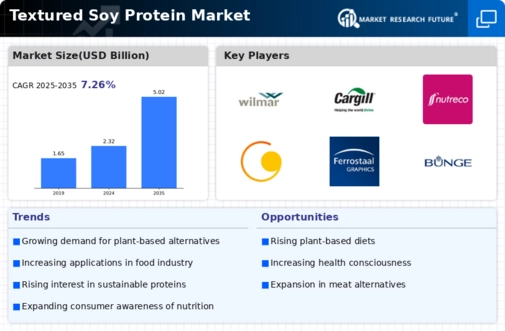
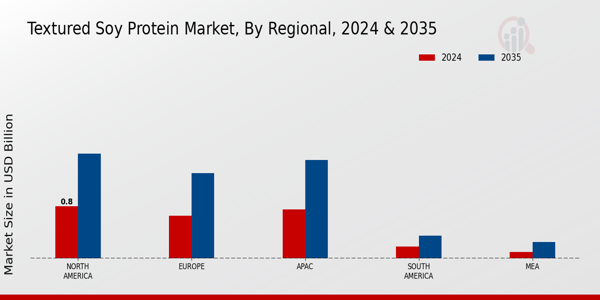
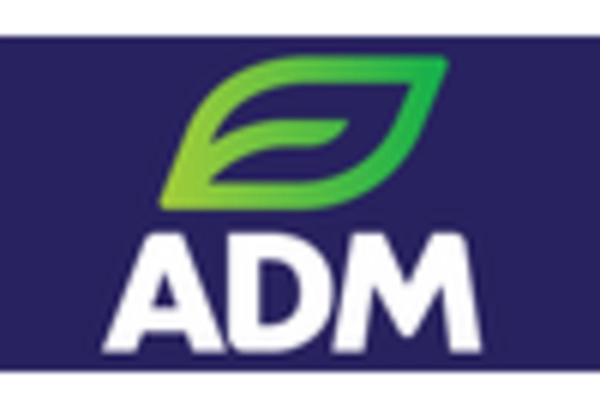
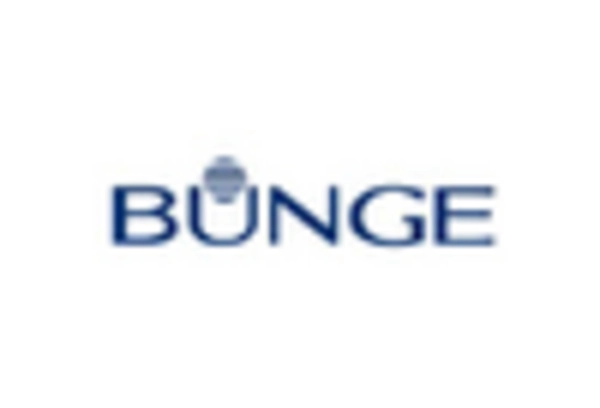


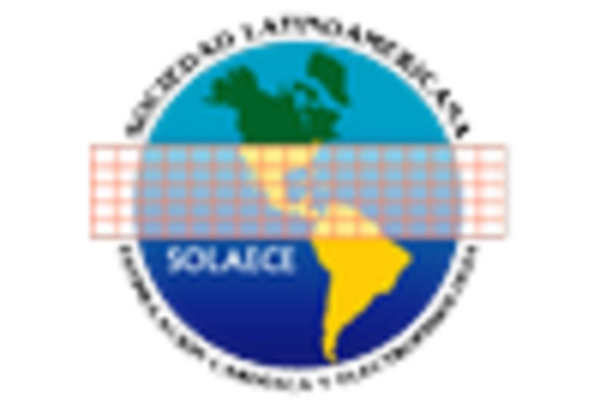


Leave a Comment